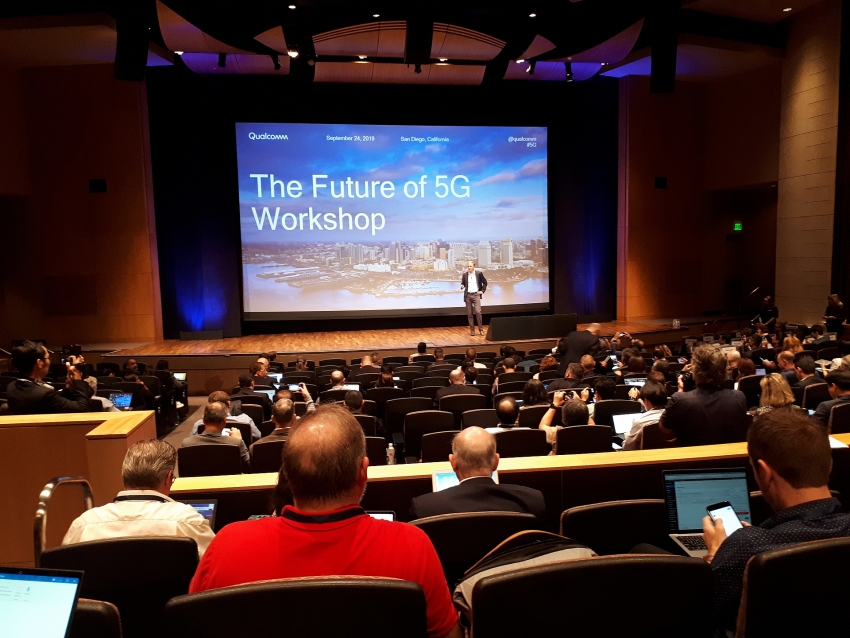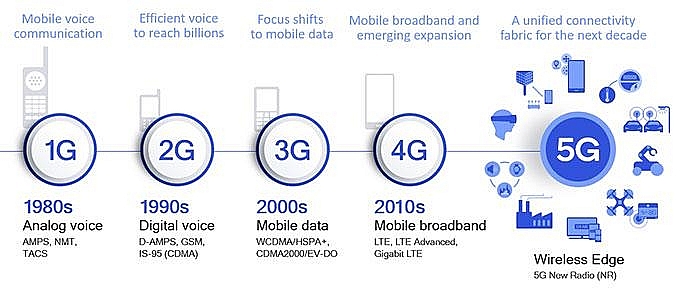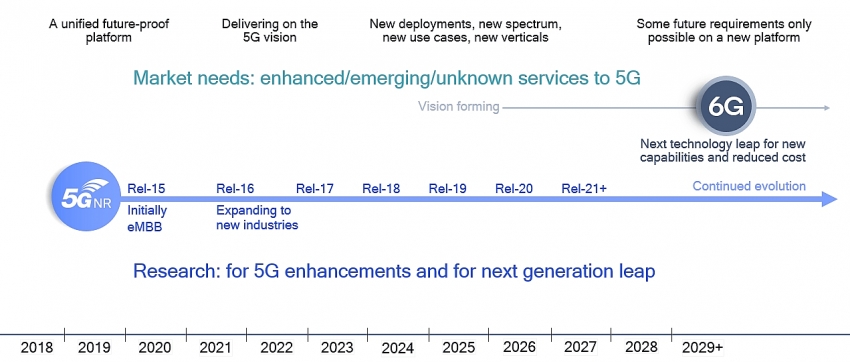5G to proliferate to more smartphone tiers, device classes next year
 |
| Qualcomm Future of 5G workshop |
The Qualcomm Future of 5G workshop took place in the US on September 24-25, to discuss the 5G evolution ahead. The event, which attracted hundreds of journalists and analysts from the world, including those from VIR, focused on 5G and the Internet of Things (IoT).
Dr James H. Thompson, executive vice president, Engineering & CTO Qualcomm Technologies, Inc., said that 2019 is the year of 5G – and 2020 will be the year of expansion.
In the six months of 2019, mobile operators in North America, Italy, Australia, South Korea, Germany, China, Switzerland, Spain, and others launched 5G services, while many others in Japan, China, and Russia are planning to make a similar launch soon.
Qualcomm says it is seeing new 5G NR devices and networks being launched at a rapid rate – significantly faster and more globally than LTE during its first year of commercial deployment. But this is just the beginning. Next year, it expects to see 5G proliferating to more smartphone tiers and reaching more consumers, expanding to new global markets and device classes like the always-connected PC. On the network side, 5G coverage in both sub-6 GHz and mmWave will continue to grow, thanks to new 5G spectrum being made available through auctions and dynamic spectrum sharing (DSS).
“With DSS, we will not only see even broader 5G coverage in lower bands, but also the enablement of direct migration from today’s non-standalone (NSA) networks to standalone (SA) networks. Thus far in 2019, our focus has been on commercialising 5G NR enhanced mobile broadband (eMBB) – as well as fixed wireless access – so it’s an interesting time to consider how we got here and what’s next for 5G,” said Dr John E. Smee, vice president, Engineering, Qualcomm Technologies.
 |
Where is the 5G evolution headed?
The first goal of 5G is to address the world’s insatiable demand for better mobile experiences. Additionally, Qualcomm also wanted to design a unified platform to enable new services and address new industries with deployment across a range spectrum types. Its engine of continuous research coupled with new technology breakthroughs and hardware progress allow 5G to deliver capabilities that were not possible when 4G was defined.
For instance, 5G brings a more efficient and unified TDD design with faster turnaround that can scale to a variety of deployment scenarios and spectrum use, including low sub 1GHz, mid 2-7GHz, and high mmWave bands like 28GHz, 39GHz, and 60GHz – even considering designs for higher frequencies beyond 100GHz. What’s also fundamentally different with 5G is its flexible architectural framework that allows the invention of new ways and the expansion of its reach.
5G is the innovation platform for the next decade, and technology boundaries are needed to address new market needs and support future services that are not yet defined. If historical trends continue to repeat, the next-generation technology leap after 5G will happen in approximately 10 years’ time. Regardless if it’s called 6G or something else, we need foundational contributions to drive forward progress.
 |
What is the role of technologies that intersect with 5G?
In addition to the details of the 5G technology evolution itself, it’s important to look at the evolution of other key technologies that intersect with 5G, particularly the role of artificial intelligence. Today, there are already a wide range of power-efficient on-device AI inference use cases such as computer vision and voice recognition. While AI is often considered to be cloud-centric, it envisions AI to become increasingly distributed in the future with lifelong on-device learning, bringing benefits like enhanced personalisation and improved privacy protection.
The advanced capabilities of 5G make it ideal for playing the role of connecting distributed on-device AI engines and allowing them to be further augmented by the edge cloud – a concept called the wireless edge.
“Based on economic and performance tradeoffs, we believe there are compelling opportunities to distribute functions such as processing or AI over 5G and that these can fuel the technology evolution to unlock new possibilities for low-latency services in the 5G era. At Qualcomm Technologies, we are not focusing only on delivering the best on-device capabilities but also new technologies that will power the end-to-end system. And a good example of that is our expanded expertise in providing power-efficient AI inference capabilities to the edge cloud,” said John E. Smee.
 |
What new 5G technologies are Qualcomm working on?
5G was envisioned to be much more than just eMBB – it’s instead a unifying connectivity fabric that will connect virtually everything around us. Beyond 3GPP Release 15 – the basis of the current 5G networks – not only does Qualcomm expect an accelerated expansion of 5G in terms of commercial availability, but also a larger technology reach that can enable new industries.
Along with the mobile ecosystem, the company is already making great progress expanding 5G technologies, with Release 16 expected to be completed in early 2020 and the scope of Release 17 to be officially defined at the December Plenary meetings in Sitges, Spain.
At the Future of 5G workshop, Qualcomm provided a sneak peek into the 5G future. At this event, the giant showcased a wide range of “behind-the-scenes” 5G demos that cover many of its wireless research focus areas, including end-to-end 5G system development, 5G NR foundational enhancements in both sub-6GHz and mmWave, and the expansion of 5G into new industries such as indoor mmWave enterprise, industrial IoT, Cellular-V2X (C-V2X), and boundless extended reality (XR).
What the stars mean:
★ Poor ★ ★ Promising ★★★ Good ★★★★ Very good ★★★★★ Exceptional
Related Contents
Latest News
More News
- TECHFEST Vietnam 2025 links startups with policy and capital (December 15, 2025 | 18:21)
- MST to allocate $3.8 billion for sci-tech in 2026 (December 15, 2025 | 18:10)
- Long Thanh International Airport welcomes first Vietnam Airlines test flight (December 15, 2025 | 18:01)
- Health Innovation Hub: accelerating health equity through digital healthcare innovation (December 15, 2025 | 08:00)
- Vietnam’s first AI Law to take effect from March 2026 (December 12, 2025 | 09:00)
- Chi Communications joins SEA CAN alliance (December 11, 2025 | 17:39)
- New Law on High Technology sets incentives and safeguards (December 11, 2025 | 09:00)
- IBTE 2025 to return to Ho Chi Minh City this December (December 11, 2025 | 09:00)
- Masan posts steady gains as Vietnam targets stronger retail growth (December 10, 2025 | 18:58)
- Seafood exports to Japan surge towards new annual record (December 10, 2025 | 18:50)

 Tag:
Tag:

























 Mobile Version
Mobile Version